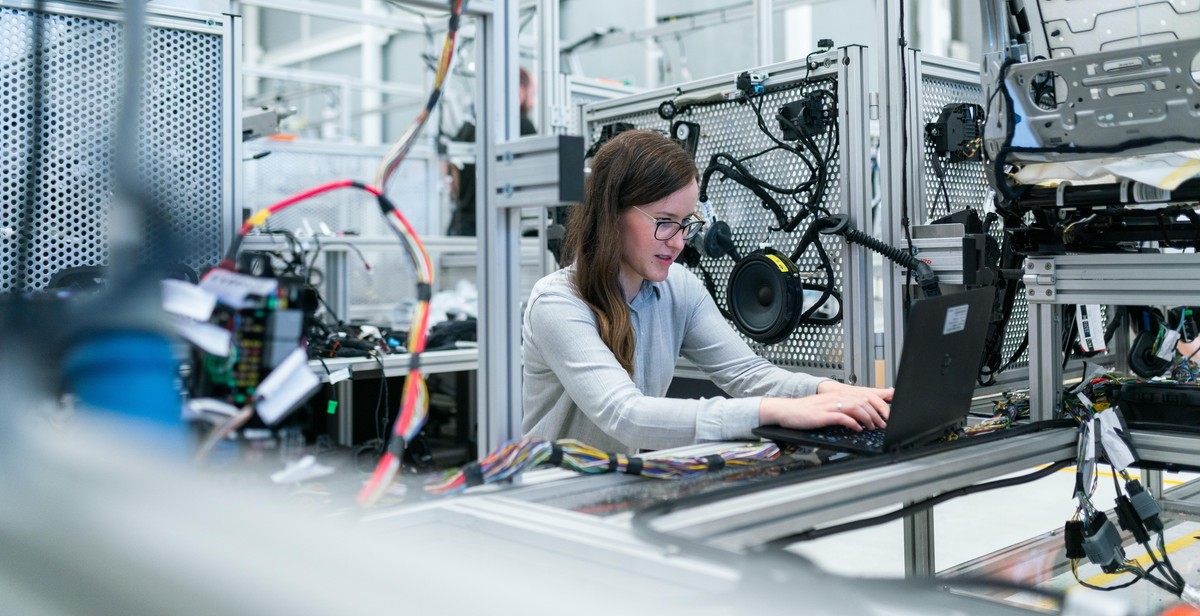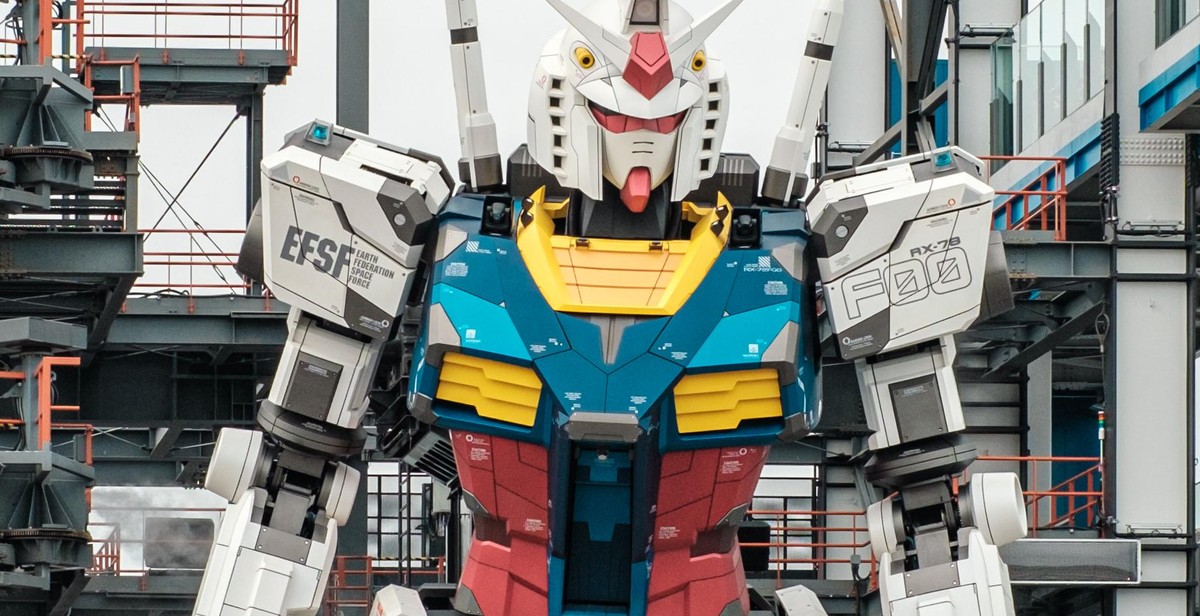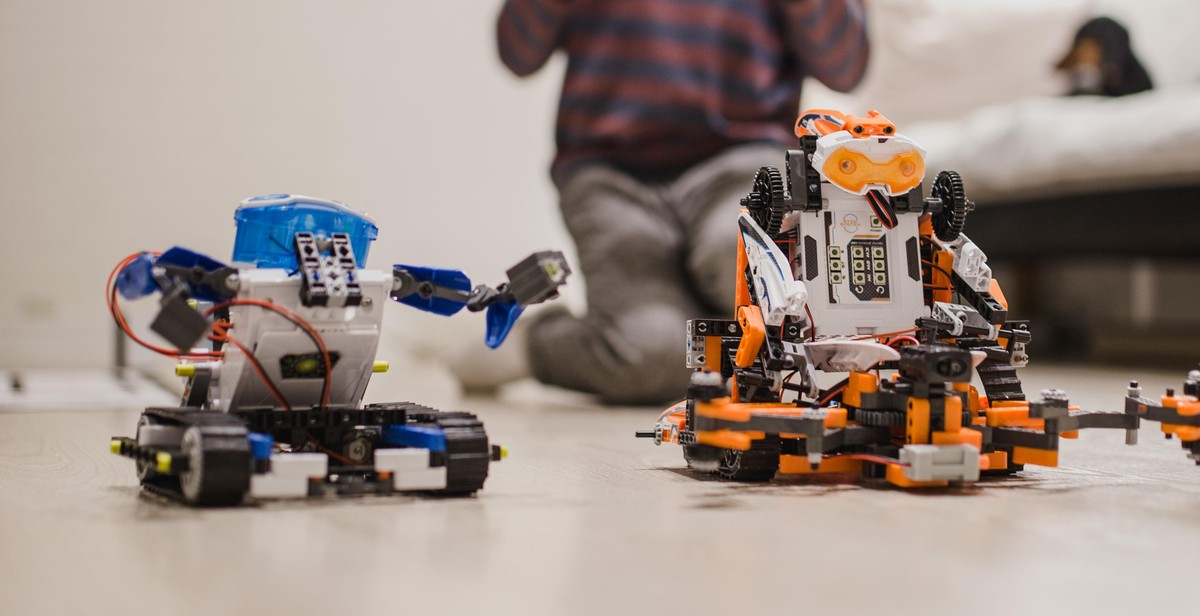Introduction
In the era of Industry 4.0, robotics has emerged as a game-changer, revolutionizing the manufacturing landscape. The integration of advanced robotics technologies and automation systems has given birth to the concept of the smart factory, which is set to shape the future of industrial production.
Industry 4.0 represents the fourth industrial revolution, characterized by the fusion of digital technologies, artificial intelligence, and robotics. This revolution aims to create a highly interconnected and intelligent manufacturing environment that can adapt to changing market demands and optimize production processes.
Robots play a pivotal role in Industry 4.0 by enabling efficient and flexible production, enhancing productivity, and ensuring consistent quality. These intelligent machines are equipped with sensors, actuators, and advanced software, allowing them to perform complex tasks with precision and accuracy.
Robotic automation not only improves operational efficiency but also enhances worker safety by taking over hazardous and repetitive tasks. By automating routine processes, human workers can focus on more value-added activities that require creativity and problem-solving skills.
This article explores the various applications of robotics in Industry 4.0 and delves into the benefits and challenges of implementing robotic automation in the smart factory. We will examine how robotics is transforming production processes, optimizing supply chains, and revolutionizing the manufacturing industry as a whole.

What is Industry 4.0?
Industry 4.0, also known as the Fourth Industrial Revolution, refers to the integration of advanced digital technologies into the manufacturing sector. It represents a paradigm shift in the way products are designed, produced, and delivered. Industry 4.0 combines automation, data exchange, and cutting-edge technologies to create smart factories that are more efficient, flexible, and connected than ever before.
At its core, Industry 4.0 aims to leverage the power of technology to optimize the entire manufacturing process, from supply chain management to production and customer service. It enables manufacturers to create a highly interconnected ecosystem where machines, systems, and humans communicate seamlessly, leading to improved productivity, reduced costs, and enhanced product quality.
Key Technologies of Industry 4.0
Industry 4.0 encompasses a range of key technologies that enable the transformation of traditional factories into smart factories. These technologies include:
- Internet of Things (IoT): IoT allows devices and machines to connect and communicate with each other, sharing valuable data in real-time. This connectivity enables seamless collaboration and automation across the manufacturing process.
- Artificial Intelligence (AI) and Machine Learning: AI and machine learning algorithms enable machines to learn from data, make autonomous decisions, and perform complex tasks. This technology empowers smart factories to optimize production, predict maintenance needs, and enhance overall efficiency.
- Big Data Analytics: Big data analytics enables manufacturers to collect, analyze, and interpret vast amounts of data generated during the production process. By extracting actionable insights, manufacturers can make data-driven decisions, identify trends, and optimize operations.
- Robotics and Automation: Robotics plays a crucial role in Industry 4.0, as it allows for the automation of repetitive tasks and the integration of human-machine collaboration. Robots can work alongside humans, performing tasks with precision, speed, and consistency.
By embracing these key technologies, Industry 4.0 revolutionizes the manufacturing landscape, paving the way for the smart factory of the future.

Role of Robotics in Industry 4.0
In the era of Industry 4.0, robotics plays a crucial role in transforming traditional manufacturing processes into smart, automated systems. With advancements in technology, robotics has become an integral part of the smart factory of the future, enhancing automation and efficiency, and revolutionizing the way industries operate.
Enhancing Automation and Efficiency
Robotics in Industry 4.0 enables the automation of repetitive and labor-intensive tasks. By utilizing robotics, manufacturers can streamline their operations, reduce human error, and achieve higher levels of productivity. Robots can perform tasks with great precision and speed, leading to increased efficiency and improved overall output. With the ability to work 24/7, robots ensure continuous production, minimizing downtime and optimizing resource utilization.
Collaborative Robots
Collaborative robots, also known as cobots, are designed to work alongside humans, enhancing their capabilities rather than replacing them. These robots are equipped with advanced sensors and AI algorithms, allowing them to interact safely with humans and work collaboratively on complex tasks. Cobots can perform tasks that require human-like dexterity and decision-making, such as assembly, quality control, and material handling. Their ability to work in close proximity to humans makes them ideal for small-scale manufacturing and customized production.
Intelligent Robotics
Intelligent robotics is another significant aspect of robotics in Industry 4.0. These robots are equipped with advanced sensors, machine learning algorithms, and AI capabilities, enabling them to perceive and understand their environment. Intelligent robots can adapt to changing conditions, make autonomous decisions, and learn from their interactions, making them highly versatile and adaptable to various manufacturing processes. They can analyze vast amounts of data in real-time, enabling predictive maintenance, optimizing production schedules, and improving overall operational efficiency.
Overall, the role of robotics in Industry 4.0 is pivotal. By enhancing automation and efficiency, enabling collaborative work environments, and incorporating intelligent capabilities, robotics is transforming traditional manufacturing into the smart factory of the future.

Benefits of Robotics in Industry 4.0
As Industry 4.0 continues to revolutionize the manufacturing sector, the integration of robotics has become increasingly prevalent. The adoption of robotics in the smart factory of the future offers a wide range of benefits that enhance productivity, improve quality, and ensure the safety of workers.
Increased Productivity and Output
One of the most significant advantages of robotics in Industry 4.0 is the substantial increase in productivity and output. Robots are capable of working around the clock without the need for breaks or rest, resulting in significantly higher production rates and faster turnaround times. By automating repetitive and mundane tasks, robots free up human workers to focus on more complex and value-added activities, further boosting overall productivity.
Improved Quality and Precision
With their high level of accuracy and precision, robots in Industry 4.0 ensure consistent and reliable product quality. By eliminating human error, robots can perform tasks with exceptional precision, leading to enhanced product quality and reduced defects. This level of accuracy is particularly crucial in industries that require intricate assembly or delicate handling, such as electronics or pharmaceuticals.
Enhanced Safety for Workers
Worker safety is a top priority in any manufacturing environment, and robotics play a significant role in improving safety standards. By taking over hazardous or physically demanding tasks, robots minimize the risk of workplace accidents and injuries. This not only protects workers but also reduces the associated costs of workplace accidents, such as medical expenses and downtime.
In conclusion, the integration of robotics in Industry 4.0 brings numerous benefits to the manufacturing sector. From increased productivity and improved quality to enhanced worker safety, robotics plays a crucial role in shaping the smart factory of the future.

Challenges and Considerations
Integration and Compatibility
One of the major challenges in implementing robotics in Industry 4.0 is the integration and compatibility of different systems. With the smart factory concept relying on interconnected devices and systems, it is crucial to ensure seamless communication and data exchange between robots, machines, and other equipment. This requires standardized protocols and interfaces that can handle the complexity of diverse technologies and ensure interoperability.
Cost and Return on Investment
While robotics can bring significant benefits to the smart factory, cost considerations remain a challenge. The initial investment in robot acquisition, deployment, and maintenance can be substantial. Organizations should carefully evaluate the potential return on investment (ROI) and consider factors such as increased productivity, reduced labor costs, and improved product quality. A thorough cost-benefit analysis is necessary to determine the feasibility and long-term profitability of implementing robotics in Industry 4.0.
Workforce Adaptability and Training
Introducing robotics into the smart factory also requires addressing the challenges related to workforce adaptability and training. As automation takes over certain tasks, workers need to be equipped with new skills that complement the capabilities of robots. This may involve upskilling or reskilling the existing workforce to handle more complex roles that require human judgment, creativity, and problem-solving. Adequate training programs and support should be provided to ensure a smooth transition and maintain employee engagement and job satisfaction.
In conclusion, the successful implementation of robotics in Industry 4.0 requires overcoming challenges related to integration and compatibility, cost and ROI, as well as workforce adaptability and training. By addressing these considerations, organizations can harness the full potential of robotics and create a smart factory of the future that enhances productivity, efficiency, and competitiveness.

Future Trends and Outlook
As we delve deeper into the era of Industry 4.0, robotics is set to play a pivotal role in transforming traditional factories into smart and autonomous manufacturing hubs. Powered by cutting-edge technologies such as Artificial Intelligence (AI) and Machine Learning (ML), the future of robotics in Industry 4.0 looks promising and exciting.
Artificial Intelligence and Machine Learning
The integration of AI and ML into robotics systems is revolutionizing the manufacturing landscape. With the ability to analyze vast amounts of data and make intelligent decisions, robots are becoming more autonomous and efficient. AI-powered robots can adapt to changing conditions, optimize production processes, and even predict maintenance requirements, leading to increased productivity and reduced downtime.
Machine Learning algorithms enable robots to learn from their experiences and continuously improve their performance. This capability allows robots to handle complex tasks, such as quality control, anomaly detection, and predictive maintenance, with greater precision and accuracy. As AI and ML technologies continue to advance, we can expect robots to become even smarter, more adaptable, and better equipped to handle intricate manufacturing processes.
Internet of Things (IoT) Integration
The integration of robotics with the Internet of Things (IoT) is a key driver of the smart factory revolution. By connecting robots to a network of sensors, devices, and other machines, manufacturers can create a seamless and interconnected ecosystem. This integration enables real-time data exchange, remote monitoring, and control, as well as enhanced coordination between robots and other production systems.
IoT integration empowers robots to communicate and collaborate with each other, optimizing their performance and enabling synchronized workflows. It also facilitates predictive maintenance, as robots can transmit data about their condition and performance to a central system, allowing for proactive maintenance scheduling and minimizing unplanned downtime.
Advanced Human-Robot Collaboration
The future of robotics in Industry 4.0 is not about replacing human workers but rather enhancing their capabilities and creating new opportunities for collaboration. Advanced human-robot collaboration involves the seamless integration of humans and robots working side by side, leveraging each other’s strengths.
Collaborative robots, also known as cobots, are designed to work safely alongside humans. They can perform repetitive and physically demanding tasks, allowing human workers to focus on more complex and cognitive tasks that require human judgment and creativity. This collaboration enhances productivity, efficiency, and job satisfaction while reducing the risk of workplace injuries.
In conclusion, the future of robotics in Industry 4.0 is characterized by the integration of AI and ML, IoT connectivity, and advanced human-robot collaboration. These trends promise to revolutionize the manufacturing landscape, enabling smart factories that are more efficient, flexible, and productive.
Conclusion
In conclusion, robotics in Industry 4.0 is revolutionizing the manufacturing sector, paving the way for the smart factory of the future. With the integration of advanced robotics technologies, automation, and artificial intelligence, businesses can achieve unprecedented levels of efficiency, productivity, and flexibility.
The use of robots in industrial settings enables tasks to be performed with precision, speed, and accuracy, reducing human error and increasing overall quality. This not only improves production processes but also enhances workplace safety by minimizing worker exposure to hazardous environments.
Furthermore, robots can work alongside humans, complementing their skills and abilities. Collaborative robots, or cobots, are designed to interact with workers, assisting them in complex tasks and improving overall productivity. This symbiotic relationship between humans and robots fosters innovation and creates new opportunities for growth.
Industry 4.0 is characterized by the seamless exchange of data between machines, systems, and products. With the integration of robotics, sensors, and connectivity, the smart factory of the future can optimize production, reduce downtime, and enable predictive maintenance. This leads to cost savings, improved resource management, and increased customer satisfaction.
However, the adoption of robotics in Industry 4.0 requires careful planning, investment, and training. Businesses must consider the specific needs of their operations and implement robotics solutions that align with their goals and objectives. Additionally, continuous monitoring, evaluation, and refinement are crucial to ensure the successful implementation and optimization of robotics in the smart factory.
In summary, robotics in Industry 4.0 is transforming the manufacturing landscape, offering immense potential for businesses to thrive in the digital age. By embracing the power of robotics, companies can unlock new levels of productivity, efficiency, and innovation, leading to sustainable growth and competitive advantage in the global market.
